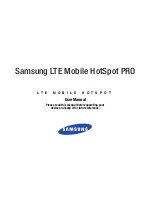
D-Link Unified Access System
Software User Manual
02/15/2011
Page 98
Document 34CS3000-SWUM104-D10
If you select WEP as the Security Mode, additional fields display, as <Link>Figure 45 shows.
Figure 45: Static WEP Configuration
<Link>Table 16 describes the configuration options for WEP.
Table 16: Static WEP
Field
Description
Static WEP or WEP
IEEE 802.1X
Static WEP uses static key management. You manually configure the same keys to encrypt
data on both the wireless client and the AP. Dynamic WEP (WEP IEEE 802.1X) uses
dynamically generated keys to encrypt client-to-AP traffic. Dynamic WEP is more secure than
Static WEP, but you need a RADIUS server to manage the keys.
If you select WEP IEEE 802.1X, the screen refreshes, and there are no more fields to
configure. The AP uses the global RADIUS server IP address and secret or the RADIUS
server settings you specify for the VAP. The AP acts as the RADIUS client and must be
configured as a client in the RADIUS server
For information about how to configure the global RADIUS server settings on the Unified
Switch, see
“Configuring AAA and RADIUS Settings” on page 79
.
Authentication
Choose the authentication type:
• Open System
—No authentication is performed
• Shared Key
—Provides a rudimentary form of user authentication, which many experts
consider to be less secure than Open System since it sends the WEP key to the client in plain
text.
• Both
—Only WEP clients are authenticated.
WEP Key Type
Select the key type by clicking one of the radio buttons:
• ASCII
—Includes upper and lower case alphabetic letters, the numeric digits, and special
symbols such as @ and #. Spaces are not permitted.
• Hex
—Includes digits 0 to 9 and the letters A to F.
















































